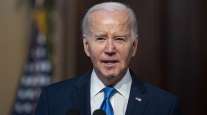HOS, EOBR Rules Among Costliest
This story appears in the Sept. 5 print edition of Transport Topics. Click here to subscribe today.
Proposed regulations to change maximum truck driver hours and require electronic onboard recorders for almost all trucks are among the most costly rules currently being considered by the Obama administration, the president wrote in a letter.
The EOBR rule, which has an estimated economic burden of $2 billion, and the hours-of-service rule, with a price tag of $1 billion, are two of seven regulations President Obama told House Speaker John Boehner (R-Ohio) will cost at least $1 billion.
“These rules are merely proposed, and before finalizing any of them, we will take account of public comments and concerns and give careful consideration to cost-saving possibilities and alternatives,” Obama wrote Aug. 30.
Days earlier, Boehner asked Obama to identify pending regulations that his administration estimates would have an economic burden of $1 billion or more.
The House, set to reconvene Sept. 6, plans to consider legislation that would require Congress to approve regulations that could have “a significant impact on the economy.” The move is part of the House’s “efforts to remove impediments to job creation and economic growth for the American people,” Boehner wrote in an Aug. 26 letter.
American Trucking Associations was pleased to see the hours-of-service regulation on the list, since it opposes that rule.
“We are very happy to see that the House is paying attention to the administration’s regulatory agenda,” Mary Phillips, ATA’s senior vice president of legislative affairs, told Transport Topics.
“We’re not surprised that hours of service is on that list,” she said. “Certainly, we hope that the House will act on the list of rules that was provided, including hours.”
However, ATA supports the EOBR mandate and does not want Congress to stop its implementation, Phillips said.
The Owner-Operator Independent Drivers Association is not surprised that the FMCSA rules were shown to be some of the most expensive ones being considered, said Todd Spencer, the group’s vice president.
“We’ve known they would be expensive all along,” said Spencer, whose group opposes both the EOBR and hours-of-service rules. “The whole premise that both of these are being advanced is totally bogus.”
Spencer predicted that the list would bring new scrutiny to the regulations from House Republicans and impede the future implementation of them.
“We’d certainly hope so,” he said.
A spokeswoman for the Federal Motor Carrier Safety Administration, which proposed both rules, declined to comment.
FMCSA released a proposal in December that favored cutting daily driving time to 10 hours from 11. It also would restrict drivers’ ability to reset their weekly work cycle with a 34-hour rest break. The agency will finalize that regulation by Oct. 28 (7-25, p. 31).
In January, FMCSA proposed requiring almost all trucking companies to use EOBRs to track driving hours. The agency’s estimate that it would finalize that rule by June 2012 is in jeopardy as a related rule requiring the devices for carriers with a pattern of hours-of-service violations was rejected in a federal court last month (see story, p. 1).
The EOBR and hours regulations join four regulations from the Environmental Protection Agency and one from the National Highway Traffic Safety Administration in the $1-billion-or-more list.
The EOBR mandate is tied with an EPA rule as the fourth-most expensive regulation being considered, while the hours rule comes in sixth or seventh place, as another rule has a range of possible costs.
Boehner responded to Obama’s letter by calling for the administration to release cost estimates for all 219 “economically significant” regulations, those whose costs are estimated at $100 million or more.
“At a time like this, with our economy struggling to create jobs, it’s misguided for the federal government to be imposing so many new rules with such enormous costs, even when some of those rules may be well-intentioned,” Boehner said in a statement.
The NHTSA rule, estimated to cost $2 billion, would require rear-view cameras on cars. The EPA rules, ranging in cost from $600 million to $90 billion, aim to lower ozone levels and clean up pollutants at power plants and steam generating plants.



